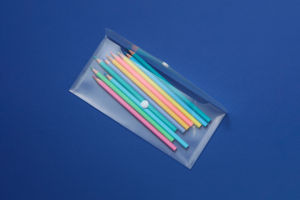Inflatable boats are versatile, lightweight, and practical options for water enthusiasts, anglers, or families seeking recreational activities.
However, purchasing the right inflatable boat requires careful consideration to ensure safety, durability, and functionality.
This guide highlights key factors to help you make an informed choice!
1. Purpose of the Boat
Determine how you intend to use the inflatable boat. Are you planning leisurely outings, fishing trips, or water sports? Boats for casual use may prioritize comfort and portability, while those for fishing or heavy-duty activities require sturdier materials and specialized features like rod holders or reinforced flooring.
2. Type of Inflatable Boat
There are various types of inflatable boats, including:
• Inflatable Dinghies: Ideal for short trips or as tenders for larger vessels.
• Sports Boats: Designed for speed and water sports, often equipped with motor compatibility.
• Rafts: Great for group adventures, offering more space and stability.
• Kayaks and Canoes: Suitable for solo or tandem paddling.
3. Material Quality
Durability depends largely on the boat’s material. Common options include:
• PVC (Polyvinyl Chloride): Lightweight, affordable, and suitable for recreational use. However, it may degrade with prolonged UV exposure.
• Hypalon: A more durable and UV-resistant material, ideal for long-term and professional use. It is often pricier than PVC.
4. Size and Capacity
Consider the boat’s size based on the number of passengers and gear. Check the manufacturer’s weight capacity to avoid overloading, which can compromise stability and safety. Opt for a larger boat if you frequently carry additional equipment, such as fishing gear or coolers.
5. Floor Type
The type of flooring affects comfort, stability, and durability:
• Air Deck: Lightweight and easy to set up, offering a balance of flexibility and rigidity.
• Aluminum or Wood Panels: Provide greater stability, ideal for fishing or standing activities.
• Rigid Inflatable Boats (RIBs): Feature a solid hull for excellent performance in rough waters but are heavier and less portable.
6. Motor Compatibility
If you plan to use a motor, check the boat’s compatibility. Consider:
• Transom Design: Ensure the boat has a sturdy transom for mounting an outboard motor.
• Horsepower Rating: Follow the manufacturer’s recommended engine power to avoid instability or structural damage.
• Electric vs. Gas Motors: Electric motors are quieter and environmentally friendly, while gas motors offer more power for longer distances.
7. Portability and Storage
One of the key advantages of inflatable boats is their portability. Check the deflated size and weight to ensure it’s easy to transport and store. Boats with compact designs and carrying bags are convenient for users with limited storage space or those frequently traveling.
8. Inflation and Setup
Consider the time and effort required for inflation and assembly. Boats with high-quality valves and efficient air pumps simplify the process. Electric pumps are a worthwhile investment for larger boats, reducing inflation time significantly.
9. Safety Features
Safety should be a top priority. Look for:
• Multiple Air Chambers: These keep the boat afloat even if one chamber deflates.
• Grab Handles and Ropes: Essential for boarding and stability.
• Repair Kits: Include patches and adhesive for on-the-spot fixes.
Always review the boat’s safety certifications to ensure compliance with industry standards.
10. Price and Warranty
Set a budget but avoid compromising on quality. While entry-level models are affordable, higher-end boats offer better durability and features. Additionally, check the warranty terms for coverage of defects and repairs, ensuring long-term peace of mind.
11. Reviews and Recommendations
Research user reviews and expert recommendations to learn about the boat’s performance in real-world conditions. Feedback can provide valuable insights into durability, ease of use, and potential issues.
Purchasing an inflatable boat involves careful consideration of its purpose, materials, size, safety features, and additional functionalities. By evaluating these factors, you can select a boat that fits your needs, ensuring enjoyable and secure water adventures!


